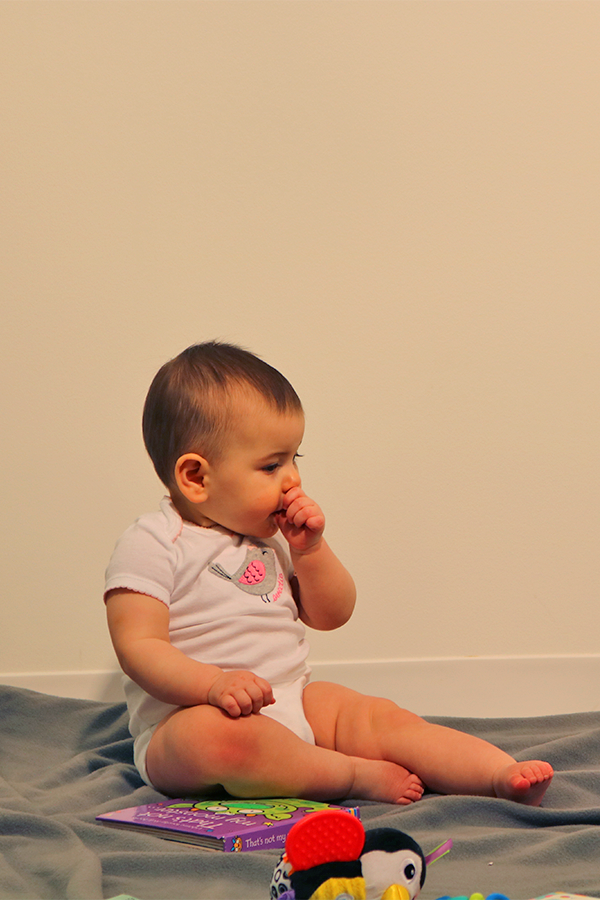What is W-Sitting?
Does your child W-Sit?
W-sitting is when a child sits on their bottom with their knees bent and feet positioned outside of their hips. If you’re standing above your child, you will see their legs and body make the shape of a W.
Watch our 1 minute video about W-sitting and why it matters:
Is W-Sitting bad?
Often children move in and out of a W-sitting position while they’re playing. It is okay for a child to move into a W-position sometimes, as long as children are not sitting in this position too frequently.
Download our FREE mobile app for games, videos, and to track important developmental milestones.
Are there risks associated with W-Sitting?
For the most part there are limited risks with W-sitting and many children choose this position for play. However, if your child frequently chooses this position you may want to take note of a few things:
 Limited Trunk/Core Strength – The wide sitting stance of the W position makes it easier to keep the body upright. Children sitting in a W position don’t have to use their core muscles as much and won’t develop them as they would in other sitting positions.
Limited Trunk/Core Strength – The wide sitting stance of the W position makes it easier to keep the body upright. Children sitting in a W position don’t have to use their core muscles as much and won’t develop them as they would in other sitting positions.- Lack of Cross Body Movements – The W position makes it difficult for children to rotate their upper bodies and reach across to either side with one or both arms.
- No Hand Preference – In a W-sitting position, a child has too much trunk control and stability. It’s very easy to use either hand to accomplish tasks. However, developing hand preference is important for writing ability later on.
- Increased Muscle Tightness – If a child is prone to muscle tightness or Hypertonia, then sitting in a W position will increase tightness in hips, knees, and ankles.
What can you do about your child’s W-Sitting?
If your toddler enjoys W-sitting, there are steps you can take to break their W-sitting habit.
If you notice your child frequently sitting in a W-position, take steps to correct the behavior.
- Remind your child to “fix their legs” whenever you see them sit in a W-position.
- Offer your child a small chair or stool as an alternative to sitting on the floor.
- You can discourage w-sitting by showing them other ways to sit. Encourage your child to try these positions:

Legs crossed – Child sits on their bottom, crosses their legs, bends their knees and tucks their feet underneath. Sometimes referred to as criss-cross applesauce.

Legs in front – Child sits on their bottom with their legs straight in front of them.
 Legs to the side – Child sits on their bottom and bends their knees so both legs are lying in one direction on one side of their body.
Legs to the side – Child sits on their bottom and bends their knees so both legs are lying in one direction on one side of their body.